Navaratri
Nine Day Yagya
Honoring the goddess in all Her forms
Kanchipuram, South India
October, 2004
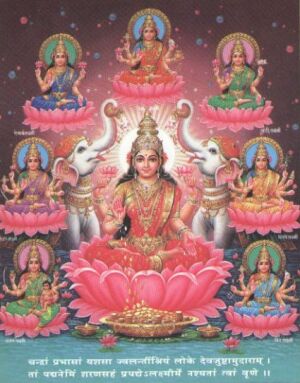
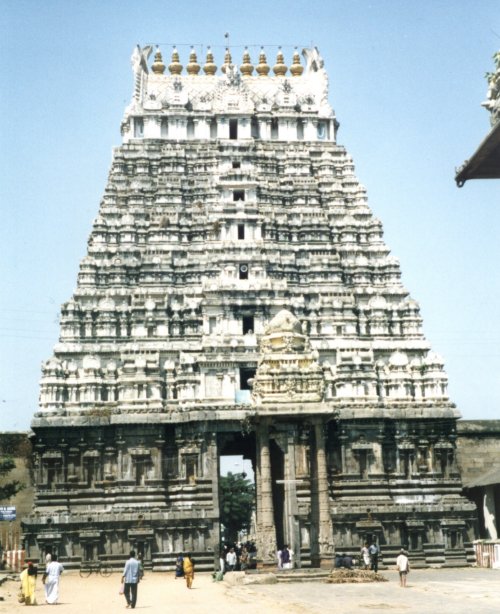
The famous Varadaraja temple is across the street from our facility. This is the second largest Vishnu temple in India and the place where the Rishi Agastya was given the 1008 names of Lalitha (the goddess in her most beautiful form) by Havagraiva; one of the incarnations of Vishnu.
Our facility in Kanchipuram. The wall for the temple is to the left across the street. Each day, the front of the house would be full of cycles.
The tree in the front of the house is the champaka tree which has especially fragrant flowers which are a favorite of Durga.

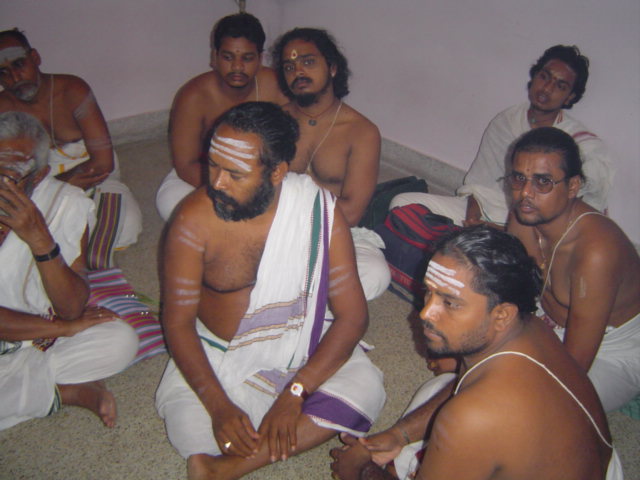
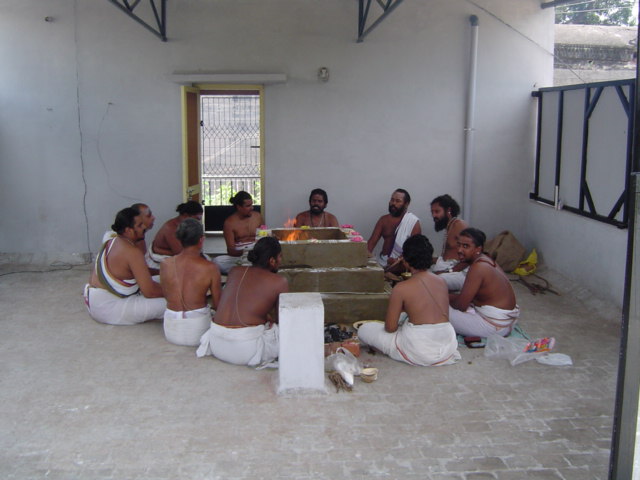
A different form of the goddess is honored each day and the pujas are performed in the pujas room on the first floor. The flower garlands are fresh each day.
The priests sit in the main room and chant the various Suktams and Mantras continuously during the 5 hour event each day.
The specially trained priests chant Chandi Path in the shaded area on the roof.
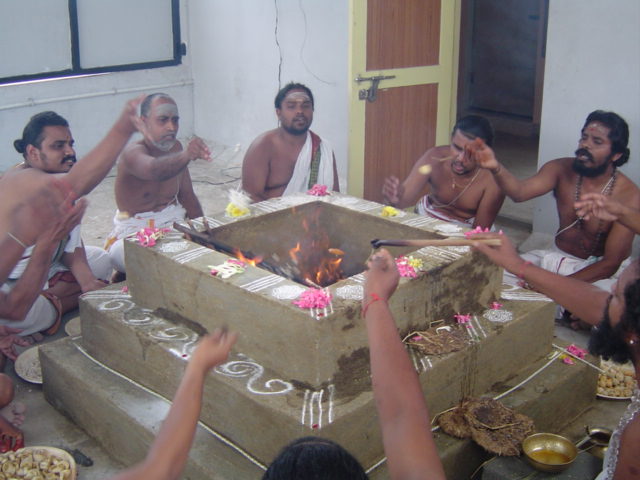
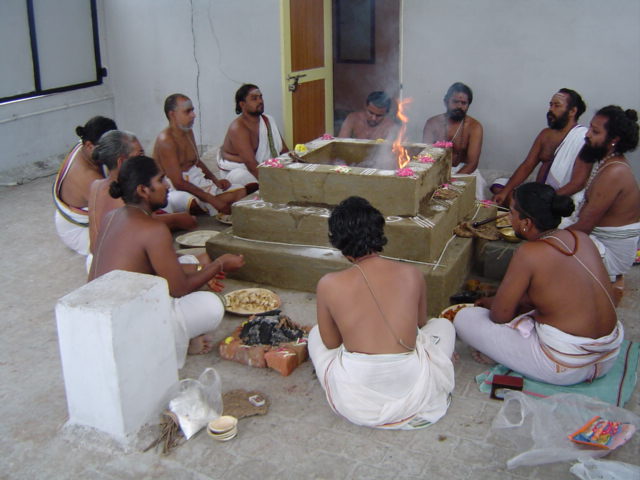
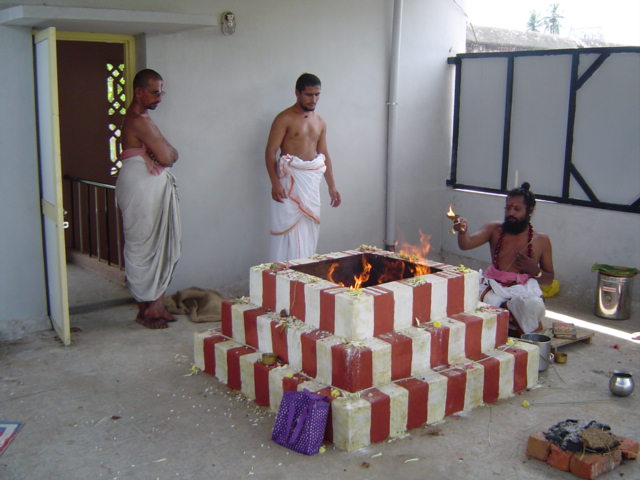
A new permanent homa kund was built in the traditional manner. It was built so that 20+ priests can comfortably participate in the yagya performances.
The specialist in Durga pujas is seated at the far right of the photo. He did nine different yagyas for Durga/Chandi with special mantras that day. He will return for the last day of the event to repeat the yagya.
Here the Durga specialist is finishing the yagya by offering the light of camphor while chanting special mantras. This puja is called aarti (offering light).
Note that the homa kund was painted with red and white stripes as is traditional.
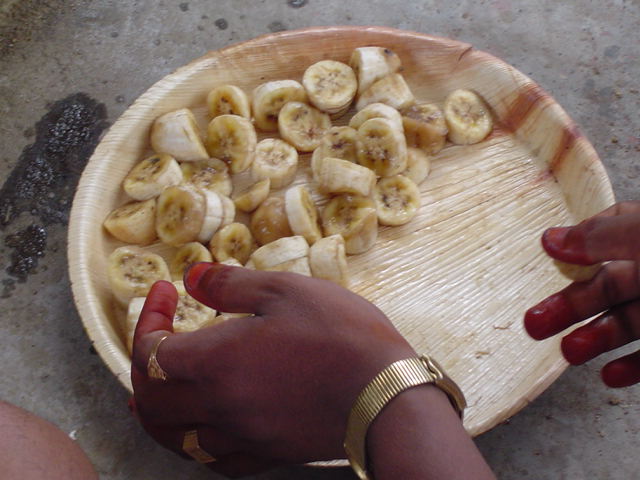
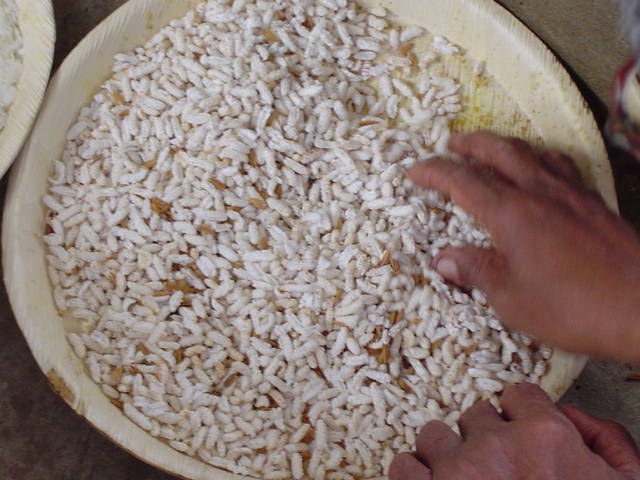
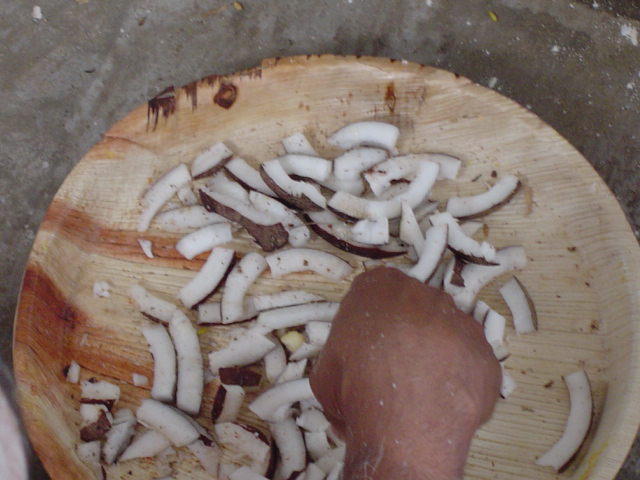
The traditional ingredients used in the fire yagya are wonderfully natural; bananas in this case...
...puffed riced
...and coconuts.